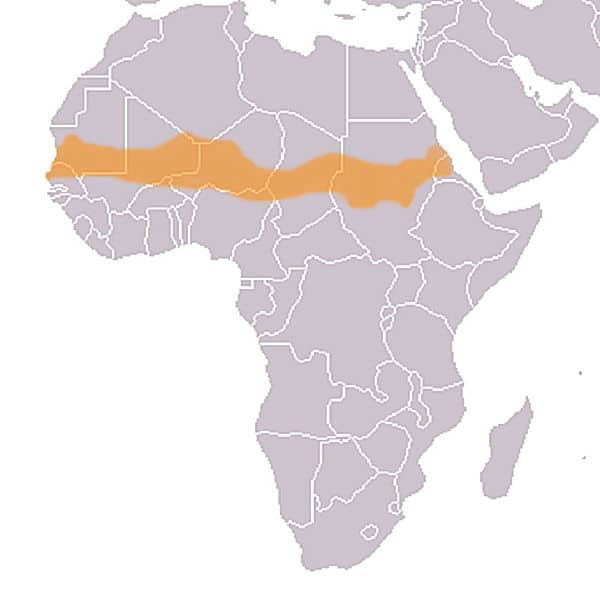The construction of the Pan-African Green Wall was approved at an international summit held in Bonn (Germany). During the meeting of the UN Committee on Science and Technology where they discussed the implementation of resolutions of the UN Convention on the Prevention of Desertification

Imagine a "green wall" 15 km wide and 8000 km long. A living wall of trees and shrubs, including birds and other animals, imagine that the wall is located in the south of the Sahara desert, from Djibouti in the Horn of Africa in the east to Dakar in Senegal in the west, across the continent.
The construction of the Pan-African Green Wall was approved at an international summit held in Bonn (Germany). The approval was a "secondary" event in the deliberations of the UN Committee on Science and Technology in which they discussed the implementation of the resolutions of the UN Convention to Prevent Desertification, the wall whose construction was led by 11 countries that are located along the southern borders of the Sahara together with "international" partners and is An international - environmental - economic project is also aimed at stopping desertification in the Sahel, that "semi-desert" transition strip that separates the Sahara from the African savannahs / from the rest of the continent (Africa).
The participating African countries are: Senegal, Mauritania, Mali, Burkina Faso, Algeria, Niger, Chad, Sudan, Somalia, Ethiopia and Eritrea. The intention is to plant a 15 km wide strip of forest across the African continent, a strip that will be continuous and in cases where there are geographical "obstacles" such as rivers, mountain ranges, rocky areas, or populated areas, the strip will flank the obstacle.
An international body with about 180 governments and other bodies constitutes the Global Environment Facility (GEF) which is dedicated to projects related to the protection of the environment, to the preservation of biological diversity, to the treatment of water, climate and agricultural land problems.
At the meeting in Bonn, the "Environmental Committee" confirmed its promise to direct 115 million dollars to the project to support the "construction" of the green wall. Other (international) bodies promised to invest up to three billion dollars. The coordinator of operations in Africa on behalf of the United Nations says that "the green wall will be an example of a variety of projects that are intended for environmental protection and economic development by stopping desertification.
The trans-African green wall was proposed for the first time in 1980 by Thomas Seneca who was then the governor of Burkina Faso, after 20 years the proposal was raised again by the president of Nigeria, in 2005 the proposal was raised at the African Union (AU) conference and since then the idea has "purchased" International support.
The green wall will have many advantages (with the exception of stopping desertification), the wall will protect water sources such as Lake Chad (which is drying up) and help restore habitats for biodiversity, the wall will be a source of fuel as well as food (fruits and vegetables) and thus support local and regional economic development which will bring political stability.
The construction of the green wall across Africa will be an engine for international cooperation on a local and regional scale and will provide a tool to fight poverty. By preventing poverty, the "migration of workers" will stop, as the young people of the region will have the opportunity to work and live in their own countries. And in addition, of course, the green wall will be a defense against climate change.
All the advantages of the green wall will promote political stability at a time when countries around and especially in the Arab world... as a concoction. Planting drought-resistant trees and shrubs, preserving water sources, developing agriculture and other sources of income will enable the development of social infrastructure and the development of a stable economy.
Beyond the technical difficulties of the project, its success depends on the participation of the local population, since in attempts at "reforestation" it became clear that without the participation of the locals, success is limited. When farmers and shepherds fear losing rights to a certain area, without clear knowledge and understanding of the benefits of the project it is difficult to advance. When the residents are clear about the options and the benefits are known, their participation in a natural and sustainable enterprise is beneficial and strengthening.
And here it turns out that there is indeed a correct possibility for cooperation centered on the idea that instead of controlling the environment for the sake of the human population, there will be control of the human population for the sake of the environment.

6 תגובות
It smells like spin without budgetary backing
which is intended to reassure the Arab public and will be forgotten after the winds of the revolution change direction.
I'd love to find out I was wrong.
I wonder if after all the murders with people who were in the area, such cooperation can really happen...
I remain skeptical…
Interesting idea. Reminded me of the book: "Sea in the Sahara" written by Zol Vern, but it seems to me that just as Vern's sea was only successful in the book, the green of the international body will also remain only on paper, because the spring water in the area will not be enough to irrigate the entire green strip, and the scientists, until Now, they couldn't move clouds. And on second thought: Verne's "sea" could be much more successful for the development of the area.
...Sahara together if partners...
for your care
How will the green wall be watered?